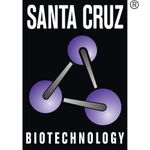Santa Cruz Biotechnology is a world leader in the development of products for the biomedical research market. Over the past 30+ years, the Company has focused on the ongoing development of research antibodies, siRNA and CRISPR Gene editing tools, biochemicals, labware and more recently has expanded into animal health care products. Santa Cruz Biotechnology has the highest commitment to quality and customer service.

PLC γ1 (E-12) HRP | Santa Cruz Biotechnology
mouse monoclonal IgG3; PLC γ1 Antibody (E-12) is an IgG3 κ mouse monoclonal PLC gamma 1 antibody (also designated PLC gamma antibody, PLCG1 antibody, or phospholipase C gamma 1 antibody) that detects the PLC gamma 1 protein of mouse, rat and human origin by WB, IP, IF, IHC(P) and ELISA. PLC γ1 Antibody (E-12) is available as both the non-conjugated anti-PLC gamma 1 antibody form, as well as multiple conjugated forms of anti-PLC gamma 1 antibody, including agarose, HRP, PE, FITC and multiple Alexa Fluor® conjugates. Phosphoinositide-specific phospholipase C (PLC) plays a crucial role in the initiation of receptor mediated signal transduction through the generation of the two second messengers, inositol 1,4,5-triphosphate and diacylglycerol from phosphatidylinositol 4,5-bisphosphate. There are many mammalian PLC isozymes, including PLC β1, PLC β2, PLC β3, PLC β4, PLC γ1, PLC γ2, PLC δ1, PLC δ2 and PLCε. PLC γ1 is widely distributed in bronchiolar epithelium, type I and II pneumocytes and fibroblasts of the interstitial tissue. Actin-regulatory protein Villin is tyrosine phosphorylated and associates with PLC γ1 in the brush border of intestinal epithelial cells. Villin regulates PLC γ1 activity by modifying its own ability to bind phosphatidylinositol 4,5-biphosphate. PLC γ1 binds Integrin α1/β1 and modulates Integrin α1/β-specific adhesion. PLC γ1 and Ca2+ play a direct role in VEGF-regulated endothelial growth, however this signaling pathway is not linked to FGF-mediated effects in primary endothelial cells. PLC γ1 is rapidly activated in response to growth factor stimulation and plays an important role in regulating cell proliferation and differentiation. It may also have a protective function during cellular response to oxidative stress.




























































